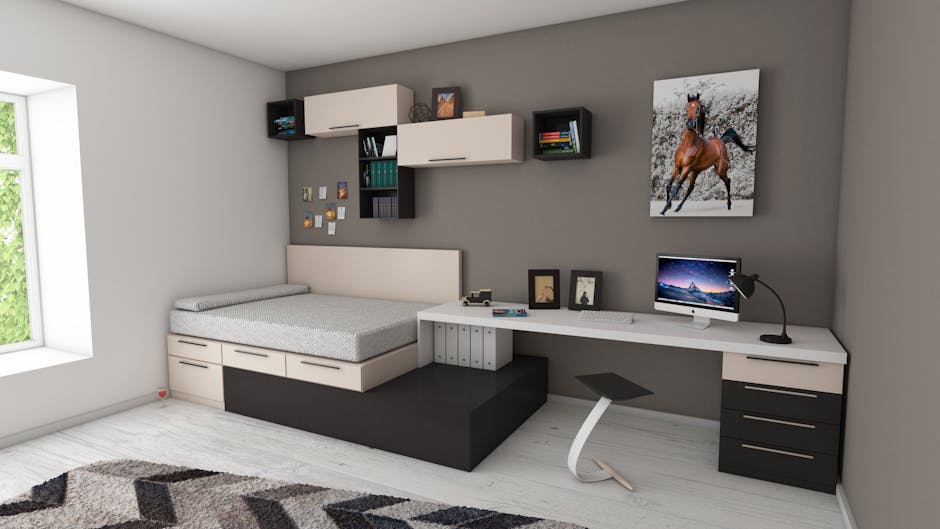Beginner's Guide to Setting Up a Smart Home Network
Setting up a smart home network can seem intimidating, especially if you’re unfamiliar with how all the devices and technologies fit together. Creating a reliable and secure smart home network is simpler than it might first appear. With an increasing number of connected devices available today ( from smart bulbs to voice assistants ) it's more important than ever to ensure your home's network can handle the demands of multiple gadgets working together seamlessly.

The first step in setting up your smart home network is understanding the essential components that make everything work together. A typical home network includes several core elements, such as a router, modem, and various connected devices. Each of these plays a vital role in how your network operates and communicates with your smart devices. Your modem is responsible for connecting your home to the internet via your Internet Service Provider (ISP). It's important to choose a modem compatible with your ISP and capable of handling high-speed connections if you plan on connecting numerous smart devices.
The router is another crucial component. It distributes the internet connection from the modem to your various devices, either through Wi-Fi or Ethernet cables. For a smooth smart home experience, consider investing in a router that supports both 2.4 GHz and 5 GHz frequencies. The 2.4 GHz band offers longer range but slower speeds, while 5 GHz provides faster speeds but over shorter distances.
Finally, the connected devices in your home ( such as smart lights, thermostats, cameras, and speakers ) rely on your network's stability and bandwidth. These devices communicate using different protocols such as Wi-Fi, Zigbee, or Z-Wave. Understanding which protocol each device uses will help you avoid interference and improve overall performance.
Choosing the Right Router
Not all routers are built equally when it comes to supporting smart home systems. One of the most important features to look for is dual-band or tri-band functionality. Routers with these capabilities can handle more devices without slowing down your connection. Mesh routers are also becoming increasingly popular for homes with many connected devices or larger spaces. Unlike traditional routers, mesh systems consist of several nodes spread throughout your home, offering more comprehensive Wi-Fi coverage. This eliminates dead zones and ensures that even the most remote smart device can connect reliably.
Here are a few key features to look for when selecting a router for your smart home:
- MU-MIMO (Multi-User, Multiple Input Multiple Output): Ensures multiple devices can communicate simultaneously without slowing down.
- Gigabit Ethernet Ports: Provides faster wired connections for high-demand devices like gaming consoles or streaming boxes.
- Security Features: Look for routers with built-in firewalls, encryption protocols (like WPA3), and guest network options to keep your main network secure.
- Parental Controls: Handy if you have children and want to manage their internet access times or block certain websites.
Securing Your Smart Home Network
A critical part of any smart home setup is ensuring that your network is secure. With more devices connecting to the internet, there’s an increased risk of unauthorized access or data breaches. Fortunately, there are several simple steps you can take to protect yourself. Start by changing the default login credentials on both your modem and router. Many people overlook this step, leaving their networks vulnerable to attacks because they haven’t changed the manufacturer’s default username and password.
Enabling strong encryption protocols like WPA3 will add another layer of security by encrypting data transmitted between your router and devices. Setting up a guest network can help keep visitors’ devices separate from your primary network, reducing potential threats. You should also regularly update firmware on both the router and all connected devices. Manufacturers often release updates to patch security vulnerabilities or improve performance. Keeping everything up-to-date will minimize security risks while maintaining optimal performance across all your gadgets.
Setting Up Smart Home Hubs & Protocols
A smart home hub acts as a central control point for all your connected devices. While some smart products work directly with Wi-Fi (like Amazon Echo or Google Nest), others rely on specialized protocols such as Zigbee or Z-Wave to communicate with one another efficiently. Zigbee and Z-Wave are low-power wireless technologies designed specifically for smart home communication. These protocols allow multiple devices to connect without clogging up bandwidth typically used by smartphones or laptops. If you have several Zigbee or Z-Wave-compatible products in your home (like Philips Hue lights or certain door sensors), using a hub compatible with these protocols can streamline communication between them.
If you're starting small with just a few products like smart lights or plugs, you might not need a hub right away since many products now integrate directly with voice assistants like Alexa or Google Assistant via Wi-Fi. As you add more complex setups involving motion sensors or automated routines across different brands' products, having a dedicated hub simplifies management significantly.
Troubleshooting Common Issues
No matter how well-prepared you are during setup, problems may arise as you expand your smart home network. Common issues include slow speeds, dropped connections, or incompatible devices.
If you're experiencing slow Wi-Fi speeds after adding new smart gadgets to your setup, it may be time to upgrade either your internet plan or router capacity , especially if multiple family members stream content simultaneously while other devices run in the background.
Another common issue arises when trying to connect incompatible products from different manufacturers that don't share communication protocols (e.g., attempting to pair Zigbee-only products with Wi-Fi-based ones). In these cases, it's best to consult product manuals carefully before purchasing new additions for compatibility details.
Creating an efficient smart home requires understanding how each component fits within the larger system of connected devices. From selecting the right router capable of managing multiple gadgets at once to choosing compatible hubs based on communication protocols like Zigbee or Z-Wave , it’s about finding balance between performance needs and security considerations.